Area and Perimeter -> measures
Measures
Introduction
Measures are used to quantify or compare the attributes of objects. In mathematics, we use measures to understand and express the size, length, weight, volume, and other characteristics of different objects.Types of Measures
There are several types of measures commonly used in mathematics, including:- Length: The measure of how long an object is, typically expressed in units such as meters, centimeters, inches, or feet.
- Area: The measure of the size of a surface or a two-dimensional shape, expressed in square units such as square meters or square feet.
- Volume: The measure of the amount of space occupied by a three-dimensional object, expressed in cubic units such as cubic meters or cubic feet.
- Weight: The measure of how heavy an object is, typically expressed in units such as grams, kilograms, ounces, or pounds.
- Time: The measure of the duration of an event or the interval between two events, typically expressed in units such as seconds, minutes, hours, days, or years.
Conversion of Measures
It is often necessary to convert measures from one unit to another. For example, converting from meters to centimeters, or from inches to feet. Understanding how to convert measures is an important skill in mathematics.Study Guide
To master the topic of measures, here are some key concepts to focus on:- Understanding the basic units of measure for length, area, volume, weight, and time.
- Practicing the conversion of measures between different units within the same type of measure (e.g., meters to centimeters, or minutes to hours).
- Applying measures to solve real-world problems, such as calculating the area of a room or converting weights from one unit to another.
- Exploring the concept of perimeter and circumference as related measures in geometry.
- Using measurement tools, such as rulers, tape measures, and scales, to make accurate measurements.
Conclusion
.◂Math Worksheets and Study Guides Fourth Grade. Area and Perimeter
Study Guide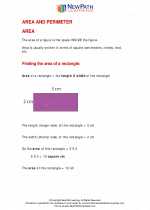 Area and Perimeter
Area and Perimeter  Worksheet/Answer key
Worksheet/Answer key Area and Perimeter
Area and Perimeter  Worksheet/Answer key
Worksheet/Answer key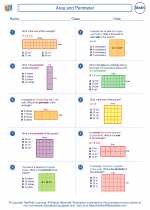 Area and Perimeter
Area and Perimeter  Worksheet/Answer key
Worksheet/Answer key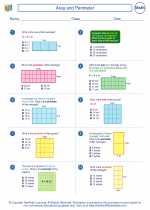 Area and Perimeter
Area and Perimeter  Worksheet/Answer key
Worksheet/Answer key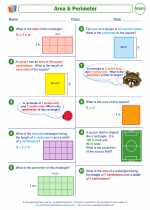 Area and Perimeter
Area and Perimeter  Worksheet/Answer key
Worksheet/Answer key Area
Area  Worksheet/Answer key
Worksheet/Answer key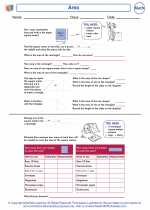 Area
Area  Worksheet/Answer key
Worksheet/Answer key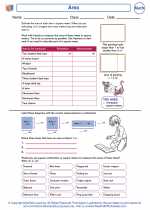 Area
Area 

 Worksheet/Answer key
Worksheet/Answer key
 Worksheet/Answer key
Worksheet/Answer key
 Worksheet/Answer key
Worksheet/Answer key
 Worksheet/Answer key
Worksheet/Answer key
 Worksheet/Answer key
Worksheet/Answer key
 Worksheet/Answer key
Worksheet/Answer key
 Worksheet/Answer key
Worksheet/Answer key

The resources above cover the following skills:
Geometry (NCTM)
Analyze characteristics and properties of two- and three-dimensional geometric shapes and develop mathematical arguments about geometric relationships.
Identify, compare, and analyze attributes of two- and three-dimensional shapes and develop vocabulary to describe the attributes.
Use visualization, spatial reasoning, and geometric modeling to solve problems.
Use geometric models to solve problems in other areas of mathematics, such as number and measurement.
Measurement (NCTM)
Understand measurable attributes of objects and the units, systems, and processes of measurement.
Understand such attributes as length, area, weight, volume, and size of angle and select the appropriate type of unit for measuring each attribute.
Apply appropriate techniques, tools, and formulas to determine measurements.
Develop, understand, and use formulas to find the area of rectangles and related triangles and parallelograms.
Grade 4 Curriculum Focal Points (NCTM)
Measurement: Developing an understanding of area and determining the areas of two-dimensional shapes
Students recognize area as an attribute of two-dimensional regions. They learn that they can quantify area by finding the total number of same-sized units of area that cover the shape without gaps or overlaps. They understand that a square that is 1 unit on a side is the standard unit for measuring area. They select appropriate units, strategies (e.g., decomposing shapes), and tools for solving problems that involve estimating or measuring area. Students connect area measure to the area model that they have used to represent multiplication, and they use this connection to justify the formula for the area of a rectangle.
Connections to the Grade 4 Focal Points (NCTM)
Geometry: Students extend their understanding of properties of two-dimensional shapes as they find the areas of polygons. They build on their earlier work with symmetry and congruence in grade 3 to encompass transformations, including those that produce line and rotational symmetry. By using transformations to design and analyze simple tilings and tessellations, students deepen their understanding of two-dimensional space.